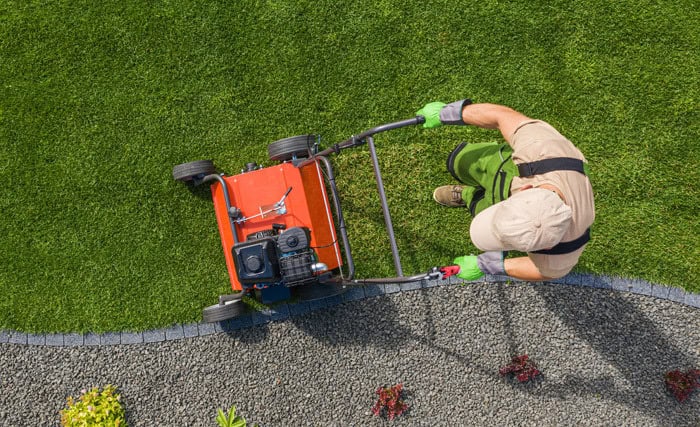
The Importance and Benefits of Aeration
Aeration is beneficial to your lawns, gardens, and flowerbeds. From a scientific perspective, it describes the process of transferring gasses between your soil and the atmosphere. In practice, it’s a useful method of supplying oxygen to topsoil in order to promote root development. But how exactly does aeration benefit you?
What Are the Primary Benefits of Lawn Aeration?
A freshly aerated lawn, garden, or flowerbed has numerous advantages over those that aren’t aerated on a regular basis. These include:
- Promoting strong root growth
- Reducing thatch
- Protecting against stress from excessive heat or drought
- Improving water filtration, drainage, and fertilizer / nutrient uptake
Now that you’re familiar with the benefits, it’s time to learn how to aerate your lawn both correctly and efficiently
How Do I Aerate My Lawn?
For best results, it’s recommended that aeration holes are spaced no more than three inches apart. Several different methods are used for lawn aeration, with the three most common types being core, spike, and liquid. The strategy you choose ultimately depends on the size of your lawn (or garden), your budget, and how much time you want to spend.
- Core: The most common option, this method inserts and removes small plugs into the ground at regular intervals. Extracted soil is then spread across the surface of your lawn, garden, or flowbed. The spikes themselves are generally no longer than two or three inches in length.
- Spike: Similar to core aeration, this method works by pushing soil further into the ground instead of extracting it. It’s best used on lightly compacted soil and right as you prep for fertilization or overseeding.
- Liquid: This next-gen method uses a liquid formula to create tiny pores within the soil. Liquid aeration generally has better penetration than the other two methods.
Once you’ve decided on the method, it’s time to choose your tools. Again, there are multiple options to consider
Manual Aerators
Small yards, gardens, and flowerbeds are easily handled – even by a novice – with manual tools. The most common options available today include:
- Step bar: Most manual aerators take the form of multiple tines affixed to a step bar and a wooden handle. By stepping on the bar, the spikes can be thrust into the soil. Solid spikes are generally used for spike aeration while hollow ones are best for core aeration.
- Garden hose: Those who are performing liquid aeration won’t need anything other than their standard garden hose. Some packages attach directly to the hose while others can be sprayed around your lawn, garden, or flowerbed as needed.
- Spiked shoes: Some landscapers and gardeners prefer to use spiked attachments on their shoes. By using this method, the aeration process is as simple as walking around the yard.
Most smaller aeration jobs can easily be handled with the tools mentioned above. But what about larger yards, fields, and community gardens?
Automated Aerators
Large aeration jobs are best handled with an automated aerator. Similar to lawn mowers, some models are meant to be pushed ahead of the user while others are towable behind a tractor or ATV. In either case, the machine uses ground propulsion to automatically push the aerator’s tines into the ground at regular intervals.
How Often Should I Aerate My Lawn?
It’s important to aerate your lawn during the right season. This primarily depends on the type of grass growing within your yard. Most cool-season grasses, like fescue and bluegrass, are best aerated in the spring or fall. Other, warm-season grasses, like bermudagrass and zoysia grass, are best aerated in late spring to mid-summer.
Most lawns only need to be aerated once per year. For regions with clay soil, or for lawns that experience heavy foot traffic, twice per year should be sufficient.
What Should I Do Immediately After Aerating My Lawn?
Poking a few holes in the ground isn’t enough to finish the job. In order to benefit from your recent aeration job, it’s critical that you perform a few steps in the hours and days after aerating your lawn.
- Seeding is best done immediately after aeration, as this gives them the best chance to develop strong roots right from the start.
- Watering your lawn right away will let you take advantage of the improved soil penetration offered by aeration.
- Fertilizing, like seeding and watering, is best done immediately after aeration.
After that, the only thing left is kick back, relax, and enjoy your freshly aerated lawn. Hey – you earned it!
If at any time you feel unable to deal with the task and work of aerating your lawn or any issues regarding your lawn, you may want to consider help from our trained TruGreen Pros near you.
